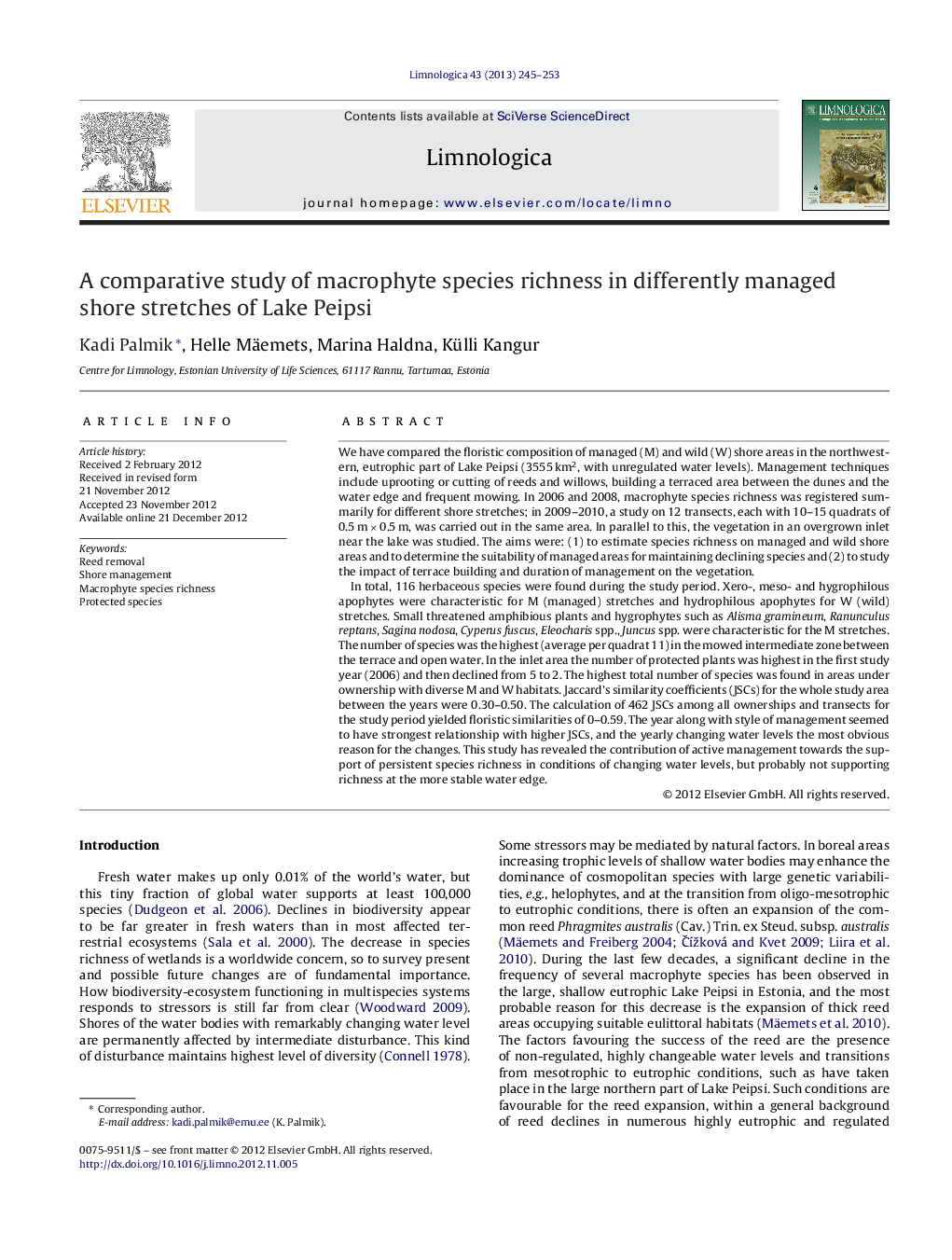| Article ID | Journal | Published Year | Pages | File Type |
|---|---|---|---|---|
| 6305668 | Limnologica - Ecology and Management of Inland Waters | 2013 | 9 Pages |
Abstract
In total, 116 herbaceous species were found during the study period. Xero-, meso- and hygrophilous apophytes were characteristic for M (managed) stretches and hydrophilous apophytes for W (wild) stretches. Small threatened amphibious plants and hygrophytes such as Alisma gramineum, Ranunculus reptans, Sagina nodosa, Cyperus fuscus, Eleocharis spp., Juncus spp. were characteristic for the M stretches. The number of species was the highest (average per quadrat 11) in the mowed intermediate zone between the terrace and open water. In the inlet area the number of protected plants was highest in the first study year (2006) and then declined from 5 to 2. The highest total number of species was found in areas under ownership with diverse M and W habitats. Jaccard's similarity coefficients (JSCs) for the whole study area between the years were 0.30-0.50. The calculation of 462 JSCs among all ownerships and transects for the study period yielded floristic similarities of 0-0.59. The year along with style of management seemed to have strongest relationship with higher JSCs, and the yearly changing water levels the most obvious reason for the changes. This study has revealed the contribution of active management towards the support of persistent species richness in conditions of changing water levels, but probably not supporting richness at the more stable water edge.
Keywords
Related Topics
Life Sciences
Agricultural and Biological Sciences
Aquatic Science
Authors
Kadi Palmik, Helle Mäemets, Marina Haldna, Külli Kangur,
